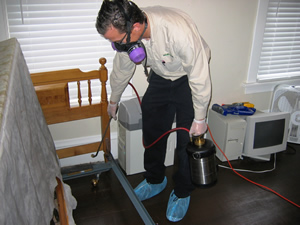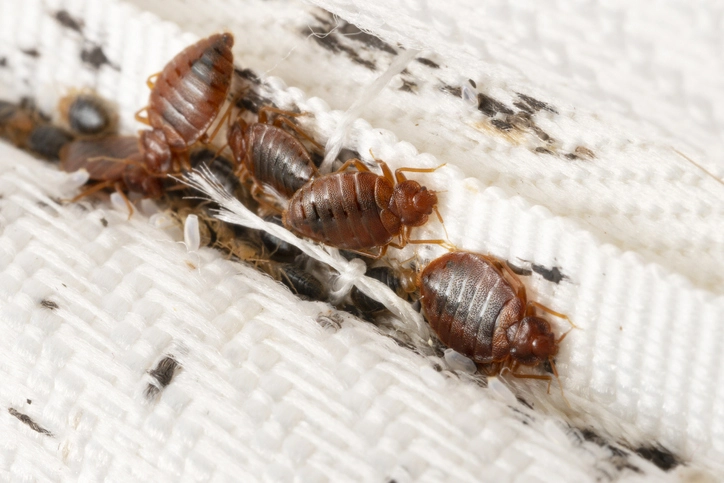Specialist A1 Bed Bug Exterminator in Houston - Effective Solutions
Specialist A1 Bed Bug Exterminator in Houston - Effective Solutions
Blog Article
Comprehending the Lifecycle of Bugs for Targeted Control Methods
Understanding the lifecycle of insects is a basic element of effective pest monitoring methods. Via a deeper understanding of how bugs progress and grow, tailored control strategies can be developed to address specific points in their lifecycle, eventually leading to more successful parasite administration end results.
Importance of Comprehending Pest Lifecycle
Comprehending the lifecycle of pests is important for establishing reliable and targeted control approaches in parasite administration. By comprehending the different stages a bug goes with from egg to adult, insect control professionals can recognize prone points in the lifecycle where treatment can be most successful.
Furthermore, identifying the details environmental conditions required for every phase of the pest's lifecycle can guide decisions on environment adjustment or exemption methods to lower and interrupt the lifecycle parasite populations. This expertise enables pest management experts to apply positive measures instead of depending only on reactive therapies, leading to more sustainable and long-lasting bug control services. Eventually, an extensive understanding of pest lifecycles equips pest control professionals to tailor their strategies properly, optimizing and minimizing environmental effects control outcomes.
Trick Stages in Parasite Development
To successfully implement targeted control strategies in pest management, a critical facet exists in comprehensively identifying and understanding the key stages in insect advancement. Insect advancement typically is composed of numerous key stages that are crucial for their lifecycle and management.

Susceptabilities in Bug Lifecycle
Throughout the numerous stages of a pest's lifecycle, distinct vulnerabilities emerge that can be strategically targeted for reliable control actions. One critical susceptability depends on the egg stage, where bugs are usually much more vulnerable to certain insecticides or biological control representatives due to their soft outer covering, making them much easier targets for treatment. In addition, the nymph or larval phase provides vulnerabilities as parasites undertake quick development and advancement, requiring high power intake that can be exploited by disrupting their food sources or introducing development preventions. Pupal phases, defined by stability and change, use a home window for targeted control with physical obstacles or specific therapies that prevent effective emergence. Finally, adult parasites, while a lot more durable because of their reproductive capacity, can still be susceptible throughout mating or egg-laying activities, which can be disrupted with scent traps or sanitation techniques. Comprehending these susceptabilities in the parasite lifecycle is vital for developing specific and effective control methods that effectively handle pest populations while reducing environmental influence.
Implementing Targeted Control Procedures

Carrying out targeted control actions normally involves a multi-faceted strategy. This might consist of habitat adjustment to make the atmosphere less congenial to bugs, such as eliminating standing water for mosquito control or securing entrance points for rodents. In addition, biological control techniques can be made use of, where all-natural predators or pathogens are presented to keep bug populaces in check.
Chemical control, such as the cautious application of pesticides, is an additional usual strategy. It is crucial to use these compounds carefully to minimize ecological influence and prospective harm to non-target types - A1 Bed Bug treatment houston. Integrated Parasite Administration (IPM) strategies that incorporate different control measures in a coordinated and lasting fashion are frequently the most efficient A1 Bed bug exterminator houston LLC in attaining long-lasting parasite management objectives. By carrying out targeted control measures based on a complete understanding of insect lifecycles, bug populaces can be effectively managed while lessening risks to human wellness and the setting.
Improved Bug Monitoring Practices

Additionally, the unification of biological control agents, such as all-natural predators or virus of parasites, can help in reducing dependence on chemical pesticides and promote a more balanced ecological community. Applying physical obstacles and catches can also become part of boosted insect management techniques, providing safe and targeted services for insect control. Furthermore, the usage of pheromones and other semiochemicals can interrupt pest mating patterns and interaction, causing minimized parasite populaces gradually.
Final Thought
Finally, understanding the lifecycle of pests is important for effective bug monitoring techniques. By identifying essential stages in pest advancement and vulnerabilities in their lifecycle, targeted control procedures can be applied to lessen pest populations. Improved bug management techniques can help reduce the reliance on broad-spectrum pesticides and promote even more sustainable and eco-friendly parasite control methods. This knowledge plays an important function in maintaining healthy and balanced communities and agricultural productivity.
Recognizing the lifecycle of pests is necessary for developing efficient and targeted control techniques in bug administration. By comprehending the different stages an insect goes with from egg to grownup, pest control specialists can identify at risk points in the lifecycle where intervention can be most effective. Ultimately, a comprehensive understanding of insect lifecycles equips parasite control experts to customize their approaches properly, decreasing ecological impacts and optimizing control end results.
By applying targeted control actions based on an extensive understanding of pest lifecycles, insect populaces can be successfully controlled while minimizing threats to human health and wellness and the setting.
By determining crucial stages in pest advancement and susceptabilities in their lifecycle, targeted control measures can be applied to decrease insect populaces.
Report this page